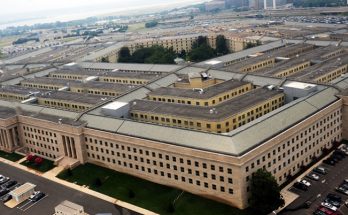
With existing law enforcement structures largely unable to cope with the social and economic largesse of organized criminal gangs and the pervasive violence left in the wake of intra-gang conflicts, El Salvador’s military has come to play an increasingly central role in the government’s strategy for re-establishing security in the country. Over the past decade, successive Salvadoran presidential administrations have attempted a mixture of militarized and diplomatic solutions to resolving the country’s crisis of pervasive violence and criminality, but no single strategy has generated more than ephemeral dividends in reducing the scope of the problem.
Years of meager economic growth in the first half of the decade, and attempts to develop less punitive strategies toward crime reduction, resulted in lowered defense spending over the past several years. High deficit spending had also became a growing concern for the government, with gross government debt increasing rapidly over the past 10 years. As a result, El Salvador’s defense budget declined from $155.4 million in 2014 to $141.2 million in 2018. In 2019, the government implemented a minor increase of 1 percent in real terms.
However, this program of modest incrementalism has been abandoned wholesale and replaced by a dramatic and nearly unprecedented program of military expansion under the presidential administration of Nayib Bukele.
The Bukele administration has centered its public mandate on reducing the endemic level of violent crime in the country, and its chosen mechanism for achieving this objective is the armed forces and the so-called Territorial Control Plan, which calls for large-scale surges of military personnel into areas characterized by high levels of criminality. The operations of the Territorial Control Plan are dependent upon the military’s ability to sustain large-scale, long-term deployments and an active street presence in contested areas across the breadth of the country. Such operations require the maintenance of an active and flexible force posture.
Amidst much political controversy and turmoil, the Bukele administration secured a massive increase in defense expenditures during its first year in office in order to fund the operations of the Territorial Control Plan and lay the foundations for a wider revitalization of the military’s capabilities and personnel base. Ultimately, the administration managed to wrest a sum of $220.4 million from the national legislature, constituting a dramatic 51.5 increase to the national defense budget. The following year, the defense budget was increased again to a sum of $248.0 million, constituting a 12.5 percent increase from 2020. This figure was later supplemented by an additional $2.0 million.
To date, defense expenditures have primarily been devoted to managing the cost of the increase in active manpower and restoring various assets and capabilities that had begun to wither owing to a lack of material and financial resources over the past decade. The government’s muscular strategy against the country’s gangs is largely dependent on manpower rather than hardware, so improving the living standards and pay of field troops is deemed critical to better insulating the military from corruption and ensuring that qualified personnel can be maintained. Similarly, press reports indicate the military is planning relatively little in the way of costly new procurement programs, instead prioritizing the acquisition of sorely needed military basics like small arms and uniforms and the recovery of inactive rotorcraft and maritime assets. Still, over the course of 2021-2022 the military has also reopened efforts to fulfill a number of long-postponed hardware requirements, which had previously been precluded by budgetary constraints.
In mid-2021, the Bukele administration announced plans to double the active force structure of the Salvadoran Army over the next five years in order to buttress the military’s ability to assert physical control of the country under the auspices of the Territorial Control Plan. Such an expansion would see the Salvadoran Army attain a strength of 40,000 personnel by 2026. Such an ambitious expansion of the military’s active manpower pool will necessitate the appropriation of substantial monetary increases to the defense budget over the coming five years. Over the course of 2021, the Army increased its active force strength by over 1,000 men, and other services have benefitted from smaller infusions of new manpower. Still, even accounting for continual budgetary growth, it is not clear whether the administration’s proposed timeline for force structure expansion is financially feasible. Remunerations already account for 85 percent of the 2022 defense budget, making manpower expansion on the administration’s desired scale potentially difficult to achieve, given rising salary requirements, at the projected rate of budgetary growth.
Indeed, even before the outbreak of COVID-19 and the administration’s announcement of its new recruitment drive, the long-term sustainability of the defense budget’s explosive growth had become a matter of domestic contention. This challenge will only grow more acute in the coming years given that El Salvador’s gross debt as a percentage of its GDP now exceeds 95 percent. Local press reports indicate that the 50 percent funding increase implemented by the government in 2020 was heavily underwritten by external loans, and international credit agencies such as Fitch Ratings have grown increasingly alarmed as to whether El Salvador will still prove capable of managing its external obligations over the coming five to 10 years without a significant deceleration of its debt trajectory. Still, Nuevas Ideas’ recent electoral success in the national legislature and the extent to which the administration’s public mandate is predicated on the perceived success of the Territorial Control Plan mean that it will likely pursue further expansion of the defense budget over the next five years, potentially superseding other state priorities. For 2022, the administration has implemented a significant, if comparatively modest, budgetary increase of 3.5 percent, elevating the total value of the budget to $256.7 million.
A lifelong enthusiast of armored vehicles, Thomas serves as an analyst on Forecast International's Military Vehicles Forecast product. In addition, Thomas is responsible for updating the reports and analysis within Forecast International's International Military Markets – Latin America & Caribbean product. He also provides analysis for Forecast International's Airborne Retrofit & Modernization Forecast. Before this assignment, Thomas served as a research assistant for Forecast International's analytical team and has made written contributions to the Civil Aircraft Forecast, Military Aircraft Forecast, and Rotorcraft Forecast services. Thomas derives his knowledge from a multidisciplinary background, with a strong emphasis on the history and politics of Russia and the former satellite republics of the Soviet Union. He has studied in the Russian Federation at Saint Petersburg State University and is proficient in the Russian language at an advanced level.




